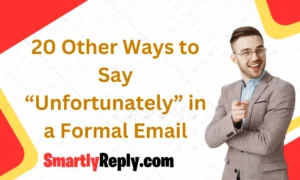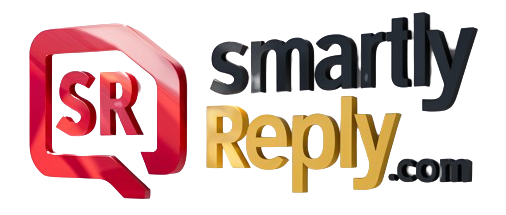Last updated on October 15th, 2024 at 06:03 pm
Last Updated on October 15, 2024 by James Wilson
When you want to keep your audience engaged or informed that more information will be coming soon, there are various ways to convey this message.
Here are 20 alternatives to “stay tuned,” with definitions, scenarios, and examples to help you communicate effectively.
1. “Keep an Eye Out”
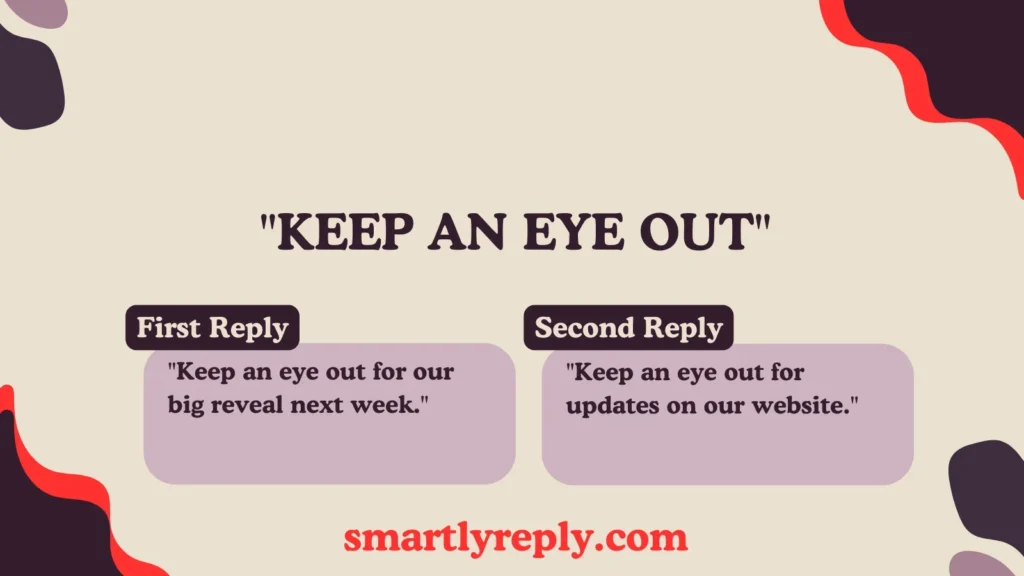
Definition: Suggesting that the audience should watch for upcoming information.
Scenario: Informing about a forthcoming announcement.
- Example 1: “Keep an eye out for our big reveal next week.”
- Example 2: “Keep an eye out for updates on our website.”
2. “Look Out For”
Definition: Indicating that the audience should expect and watch for something.
Scenario: Announcing a new product launch.
- Example 1: “Look out for our new product launch next month.”
- Example 2: “We’ve got something exciting coming soon, so look out for it!”
3. “Stay Posted”
Definition: Encouraging the audience to remain updated for more information.
Scenario: After sharing preliminary details.
- Example 1: “Stay posted for more information on the upcoming event.”
- Example 2: “We’ll provide more details soon, so stay posted.”
4. “Keep Watching”
Definition: Encouraging the audience to continue observing for updates.
Scenario: Informing about a series of upcoming videos.
- Example 1: “Keep watching for our next episode in the series.”
- Example 2: “We have more content coming your way, so keep watching!”
5. “Stay Tuned for Updates”
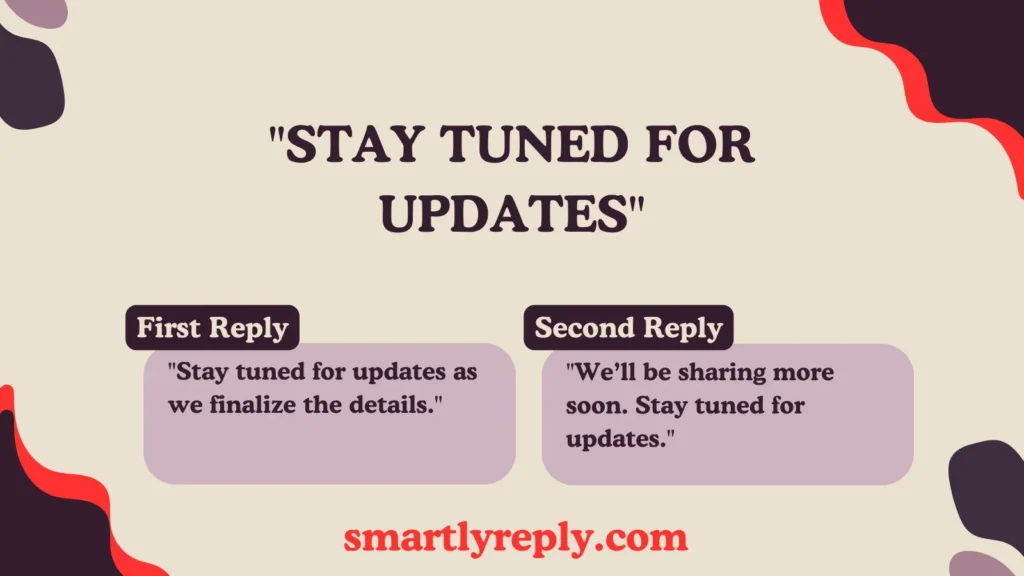
Definition: Directly asking the audience to remain alert for new information.
Scenario: After providing initial details about a project.
- Example 1: “Stay tuned for updates as we finalize the details.”
- Example 2: “We’ll be sharing more soon. Stay tuned for updates.”
6. “Watch This Space”
Definition: Indicating that more information will be shared in the near future.
Scenario: Announcing an upcoming change or event.
- Example 1: “Watch this space for exciting announcements!”
- Example 2: “We have something big in the works—watch this space.”
7. “More Details Coming Soon”
Definition: Informing that additional information will be provided shortly.
Scenario: After sharing a teaser.
- Example 1: “More details coming soon about our upcoming product.”
- Example 2: “Stay tuned—more details coming soon!”
8. “Keep Checking Back”
Definition: Encouraging the audience to return frequently for updates.
Scenario: Updating about a website or blog.
- Example 1: “Keep checking back for the latest news and updates.”
- Example 2: “We’re updating regularly, so keep checking back.”
9. “Stay with Us”
Definition: Asking the audience to remain engaged for further information.
Scenario: After a brief announcement.
- Example 1: “Stay with us for more exciting news coming soon.”
- Example 2: “We’ve got more to share, so stay with us!”
10. “Expect More Soon”
Definition: Indicating that additional information will be available shortly.
Scenario: Announcing ongoing developments.
- Example 1: “Expect more soon as we roll out new features.”
- Example 2: “We’re working on something special. Expect more soon.”
11. “Stay Alert for More”
Definition: Advising the audience to remain attentive for further updates.
Scenario: After an initial teaser.
- Example 1: “Stay alert for more news about our upcoming event.”
- Example 2: “We’ll have more updates shortly. Stay alert!”
12. “Keep an Ear Out”
Definition: Suggesting that the audience should listen for further information.
Scenario: Announcing an upcoming podcast episode.
- Example 1: “Keep an ear out for our next podcast episode.”
- Example 2: “We have more to share—keep an ear out for the announcement.”
13. “Remain Tuned”
Definition: Directly asking the audience to continue paying attention.
Scenario: After an initial update.
- Example 1: “Remain tuned for further details on the project.”
- Example 2: “We’ll be providing more information. Remain tuned!”
14. “Check Back Soon”
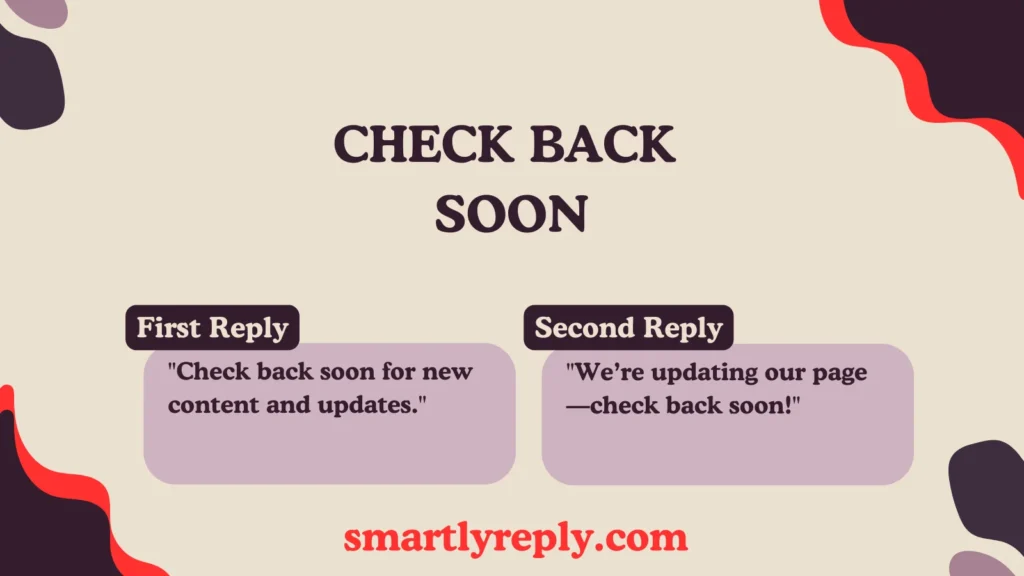
Definition: Advising the audience to return soon for updates.
Scenario: After a website update.
- Example 1: “Check back soon for new content and updates.”
- Example 2: “We’re updating our page—check back soon!”
15. “Look Forward to”
Definition: Indicating that something anticipated will be coming soon.
Scenario: Announcing future content or events.
- Example 1: “Look forward to our upcoming product launch!”
- Example 2: “We have exciting news ahead. Look forward to it!”
16. “Anticipate More”
Definition: Suggesting that the audience should expect more information soon.
Scenario: After a brief update.
- Example 1: “Anticipate more details in the coming days.”
- Example 2: “We’re working on exciting new developments. Anticipate more soon!”
17. “Be on the Lookout”
Definition: Encouraging the audience to be watchful for upcoming news.
Scenario: After sharing initial information.
- Example 1: “Be on the lookout for our full announcement next week.”
- Example 2: “We’ll be releasing more information—be on the lookout!”
18. “Expect Updates”
Definition: Indicating that new information will be provided soon.
Scenario: After providing preliminary details.
- Example 1: “Expect updates as we finalize our plans.”
- Example 2: “We’re preparing more details. Expect updates soon.”
19. “Keep Your Eyes Peeled”
Definition: Informally suggesting that the audience should stay alert.
Scenario: After giving an initial teaser.
- Example 1: “Keep your eyes peeled for our upcoming announcement.”
- Example 2: “We have something exciting in the works. Keep your eyes peeled!”
20. “More to Come”
Definition: Informing that additional information will be available soon.
Scenario: After a preliminary update.
- Example 1: “That’s all for now. More to come soon!”
- Example 2: “We’ve got more exciting news. More to come!”
These alternatives help you convey the message that more information is forthcoming, keeping your audience engaged and informed.
Conclusion
In conclusion, finding alternative phrases for “Stay Tuned” can enhance communication by making it more engaging and varied.
Whether you’re writing a newsletter, hosting a show, or promoting an event, using expressions like “Keep an Eye Out,” “Don’t Go Anywhere,” or “More to Come” can help maintain your audience’s interest while adding a fresh touch to your messaging.
Choosing the right phrase depends on the tone and context of your communication, but with a range of options, you can always keep your audience intrigued and coming back for more.

James Wilson combines charm and intelligence in his message replies. His ability to blend humor with wisdom makes every interaction enjoyable and enriching. James’s replies are not just smart—they’re unforgettable.



